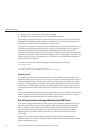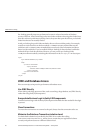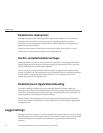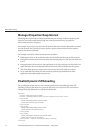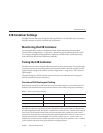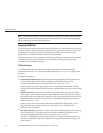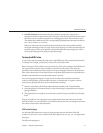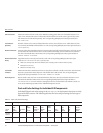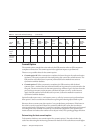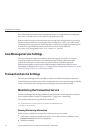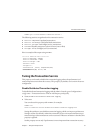
Manager Properties: Reap Interval
Modifying the reap interval can improve performance, but setting it without considering the
nature of your sessions and business logic can cause data inconsistency, especially for
time-based persistence-frequency.
For example, if you set the reap interval to 60 seconds, the value of session data will be recorded
every 60 seconds. But if a client accesses a servlet to update a value at 20 second increments,
then inconsistencies will result.
For example, consider an online auction scenario as follows:
■
Bidding starts at $5, in 60 seconds the value recorded will be $8 (three 20 second intervals).
■
During the next 40 seconds, the client starts incrementing the price. The value the client sees
is $10.
■
During the client’s 20 second rest, the Application Server stops and starts in 10 seconds. As a
result, the latest value recorded at the 60 second interval ($8) is be loaded into the session.
■
The client clicks again expecting to see $11; but instead sees is $9, which is incorrect.
■
So, to avoid data inconsistencies, take into the account the expected behavior of the
application when adjusting the reap interval.
Disable Dynamic JSP Reloading
On a production system, improve web container performance by disabling dynamic JSP
reloading. To do so, edit the default-web.xml le in the config directory for each instance.
Change the servlet denition for a JSP le to look like this:
<servlet>
<servlet-name>jsp</servlet-name>
<servlet-class>org.apache.jasper.servlet.JspServlet</servlet-class>
<init-param>
<param-name>development</param-name>
<param-value>false</param-value>
</init-param>
<init-param>
<param-name>xpoweredBy</param-name>
<param-value>true</param-value>
</init-param>
<init-param>
<param-name>genStrAsCharArray</param-name>
<param-value>true</param-value>
</init-param> <load-on-startup>3</load-on-startup>
</servlet>
WebContainerSettings
SunGlassFishEnterpriseServer2.1PerformanceTuningGuide • January200952



